As an Amazon Associate, I earn from qualifying purchases with no additional costs for you.
When visiting Georgia, rockhounds are able to bring home more than just delicious peaches and peanuts; the Peach State possesses a diverse collection of rocks and minerals, making it a great stop for rockhounding enthusiasts. Write down some of these common rocks and minerals to look for, as well as their locations, as you explore this southern state.
During your adventures in the Empire State of the South, some common rocks and minerals to search for include:
- sandstone,
- marble,
- limestone,
- tektite,
- agate,
- chert,
- slate,
- staurolite,
- quartz,
- garnet,
- tourmaline,
- gold,
- calcite,
- and aquamarine.
Although Georgia isn’t the largest U.S. state, trying to find a specific rock or mineral in such a large area is like trying to find a needle in a haystack, unless you know where to look. Keep this guide of common rocks, minerals, and locations nearby so that you can have a successful rockhounding trip in the Peach State.

If you are interested in checking out the best rockhounding tools you can find them by clicking here (Amazon link).
What Rocks Are Found in Georgia
In the valleys and forests of Georgia, some common rocks you might find are:
Sandstone
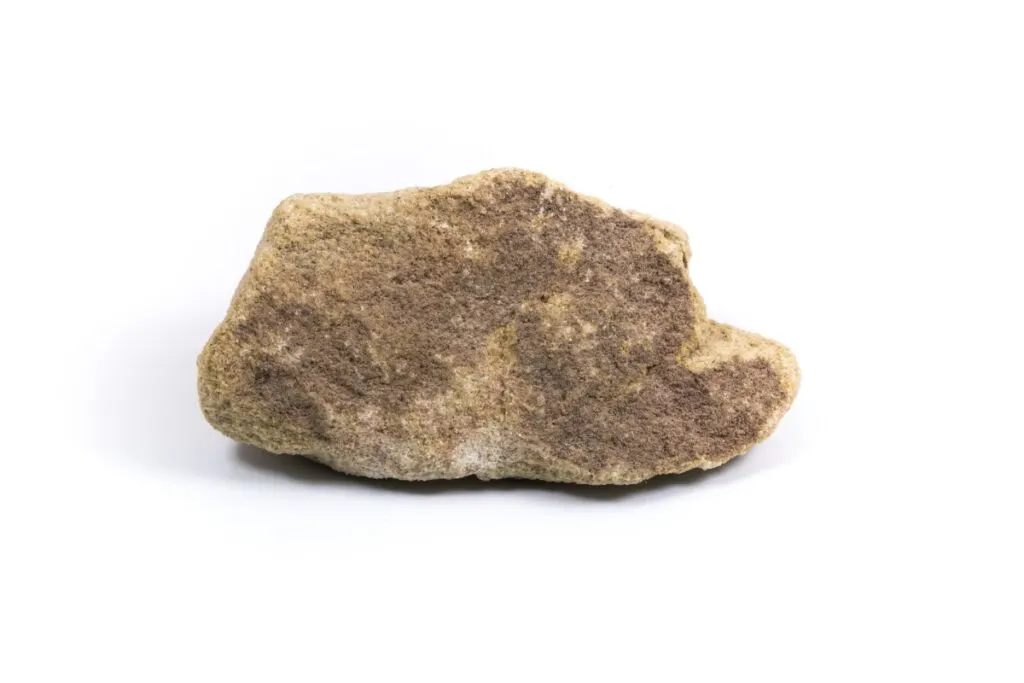
| Location | GPS Coordinates |
|---|---|
| Lookout Mountain | 34.970299, -85.363259 |
| Sand Mountain | 34.950308, -85.547425 |
| Lafayette | 34.729023, -85.280925 |
| Taylor Ridge | 34.446660, -85.316048 |
| Providence Canyon State Park (surrounding areas) | 32.068701, -84.914186 |
| Chattahoochee Forest (surrounding areas) | 34.823272, -84.163291 |
Sedimentary rocks are the most common types of rocks that exist in Georgia, so it makes sense that this state contains a fair amount of sandstone.
Most of the sandstones in this southern state are from the Precambrian and Paleozoic ages, which means they are millions of years old.
Certain types of Georgia sandstone, such as the sandstones from Lookout Mountain and Sand Mountain, are selected for architectural purposes since they are of high quality.
While sandstone is plentiful in southern Georgia, some specific places you can find this stone are Lookout Mountain, Sand Mountain, and Taylor Ridge.
You can also find sandstone in the areas near the Valley and Ridge section of the state, which is near the Alabama and Tennessee border.
Marble
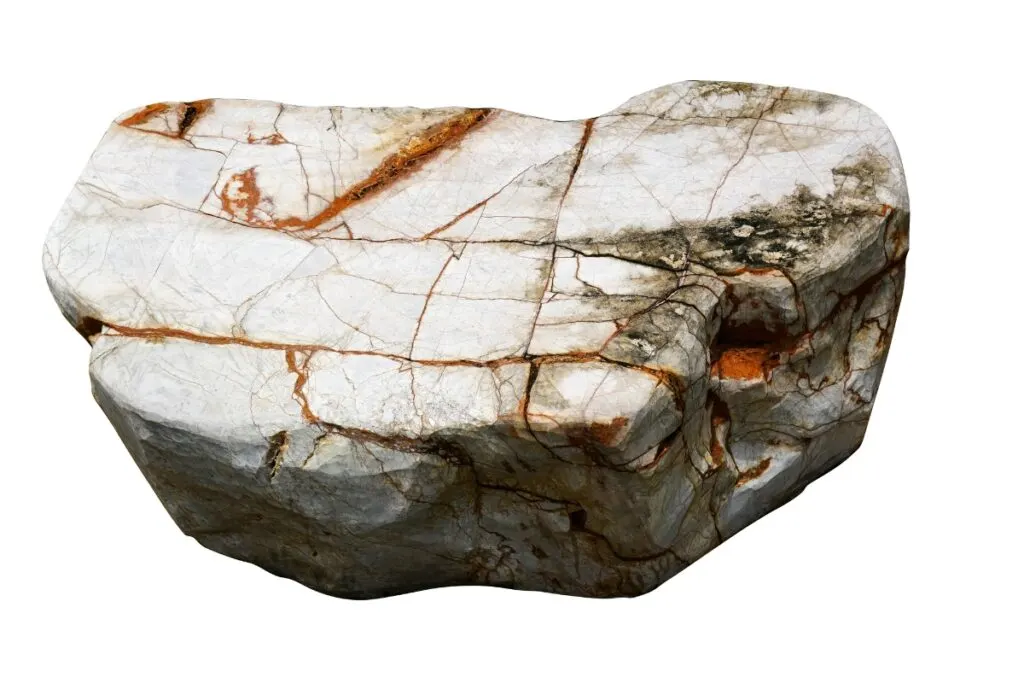
| Location | GPS Coordinates |
|---|---|
| Tate | 34.418035, -84.383045 |
| Pickens County | 34.471842, -84.476219 |
| Jasper | 34.468148, -84.440660 |
| Dahlonega | 34.519914, -83.989252 |
| Newton County | 33.553895, -83.888978 |
| Cherokee County | 34.255888, -84.433707 |
Did you know that marble is almost as famous as peaches in Georgia? Not only does the Peach State contain almost every type of marble that exists in the U.S., but the marble itself is of the highest quality.
As a matter of fact, some of the most famous U.S. landmarks were built with Georgia marble, including the Lincoln Memorial and the twenty-four columns on the east front of the U.S. Capitol in Washington, D.C.
If you want to pick up some of Georgia’s famous marble, Tate is the place to be. Some other areas to look at include Cherokee County and Pickens County.
TIP: There are about 23 states in the U.S. where marble can be found. Check out the best ones in the article below:
Where to Find Marble: Best Environments & Locations (USA)
Limestone
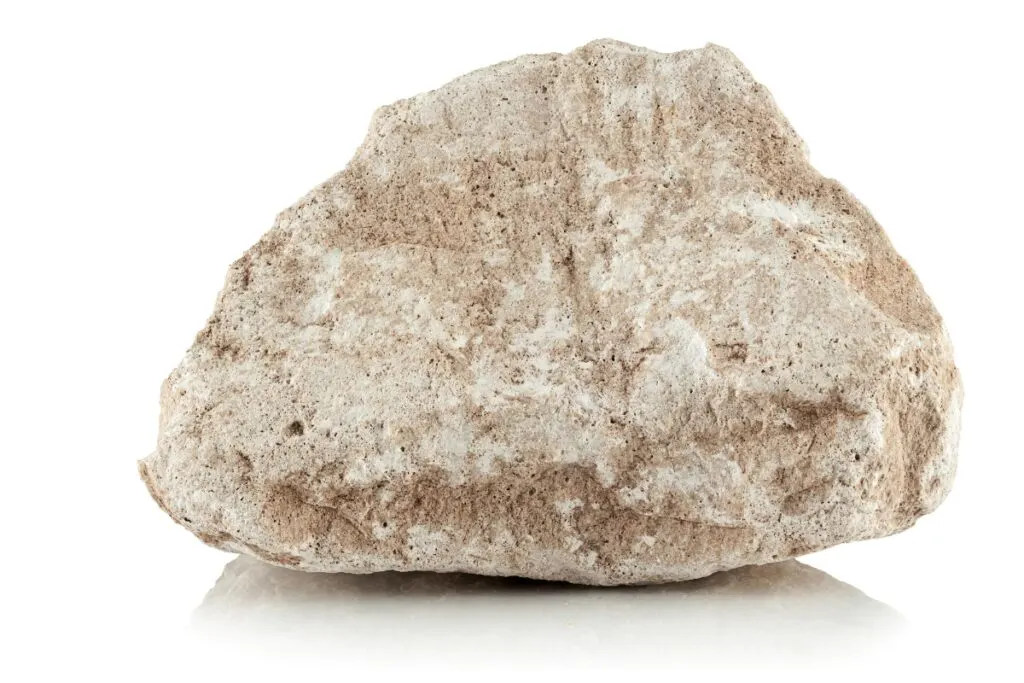
| Location | GPS Coordinates |
|---|---|
| Houston County | 32.478001, -83.625723 |
| Wilkes County | 33.770798, -82.709382 |
| Rockmart | 33.990152, -85.050087 |
| Polk County | 33.981612, -85.143471 |
| Clinchfield | 32.412688, -83.638279 |
| Gore | 34.465479, -85.268846 |
Any rockhound who’s interested in fossil-rich limestone should stop by Georgia, a state known for its many types of fossil-rich limestones. Some common types of limestone you can find include Ocala, Tivola, and Conasauga limestones, all of which are millions of years old and contain small fossils.
Houston County is well-known for its limestone, but rockhounds can also visit Polk County or Wilkes County for this rock.
Tektite
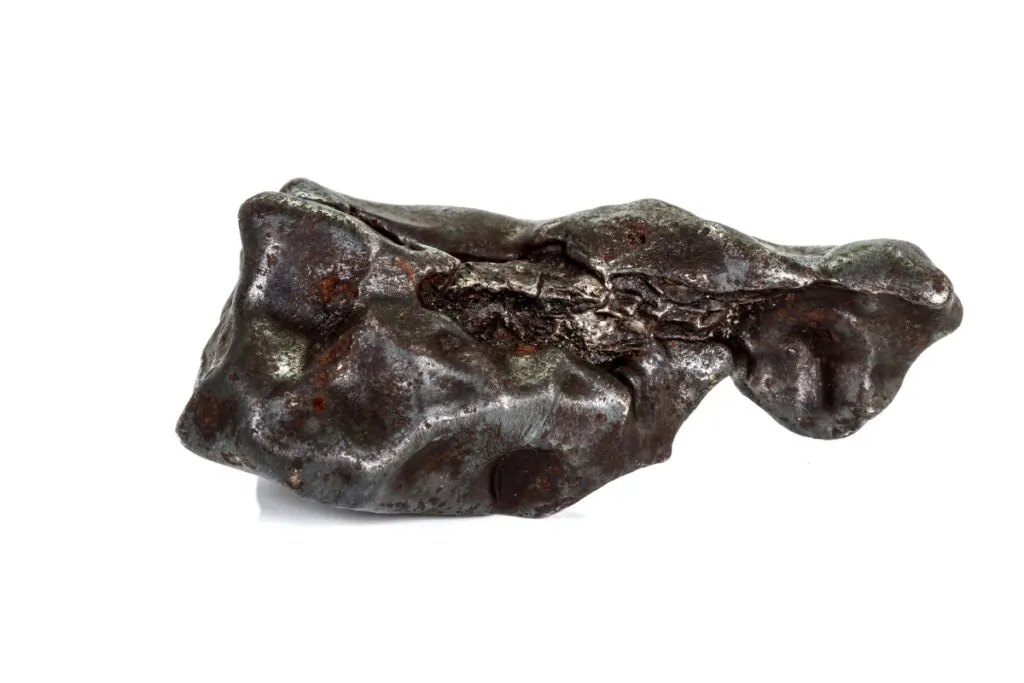
| Location | GPS Coordinates |
|---|---|
| Empire | 32.340225, -83.296056 |
| Jay Bird Springs | 32.132775, -83.003922 |
| Dodge County | 32.177164, -83.147633 |
| Bleckley County | 32.500655, -83.309627 |
| Bulloch County | 32.375223, -81.729592 |
| Toombs County | 32.131544, -82.329788 |
| Osierfield | 31.665854, -83.115898 |
One of the most interesting rocks that Georgia has isn’t native to Earth; it’s actually from space! Tektite forms when a meteorite falls onto the earth, and the resulting heat and force melt the rocks, which creates tektite after it cools.
Tektite has a glassy appearance that’s similar to obsidian, and it comes in all shapes and sizes. A tektite from Georgia is called a Georgiainite, and it displays a green, brown, or black hue when exposed to light.
To find tektites in Georgia, explore near Empire and Dodge County, two areas that are known for their tektites.
Recommendation box: All tools and equipment you need for rockhounding and rock identification* (Amazon links):
1. Estwing Rock Hammer – Light, comfortable, and extremely durable hammer.
2. Estwing Geologist Pick – Classic and the most trusted paleo pick in the world.
3. Finder 12-inch Chisels – Heavy-duty chisels set with hand protection.
4. Mini Handle Shovel – This is a great tool for digging deep in the dirt.
5 Ironclad Utility Work Gloves – Breathable, but they also protect the areas requiring them most.
6. 3M Safety Glasses – Comfortable and efficient goggles for rockhounding.
7. Convoy 8+ UV Light – 365nm UV LED flashlight with a patented glass filter.
8. Wesley’s Jewelers Loupe – High magnification options (30X and 60X) with carrying case.
9. Mohs Hardness Kit – A specially designed kit for rockhounds
*All recommended products are personally tested and regularly used by experts from this website.
Agate

| Location | GPS Coordinates |
|---|---|
| Chattahoochee River | 32.372520, -84.973926 |
| Kingston | 34.230437, -84.941321 |
| Etowah River | 34.191242, -84.954335 |
| Summerville | 34.474764, -85.333042 |
| Clarksville | 34.604955, -83.540245 |
| Savannah River | 32.192772, -81.157323 |
Almost every rockhound who visits the Peach State returns home with handfuls of agate. Agates of all colors are plentiful in Georgia, especially near the Chattahoochee River. Banded agates, lace agates, and even thundereggs exist in this state, so you never quite know what you’ll find.
Looking for agates in the Peach State? Check out the Chattahoochee River, the Etowah River, and the Savannah River for this colorful rock.
TIP: Jasper and agate are natural chemical compounds that are debated in science. Find out the main differences and similarities in the article below:
Jasper vs. Agate: Crucial Differences (Are They Same?)
Chert
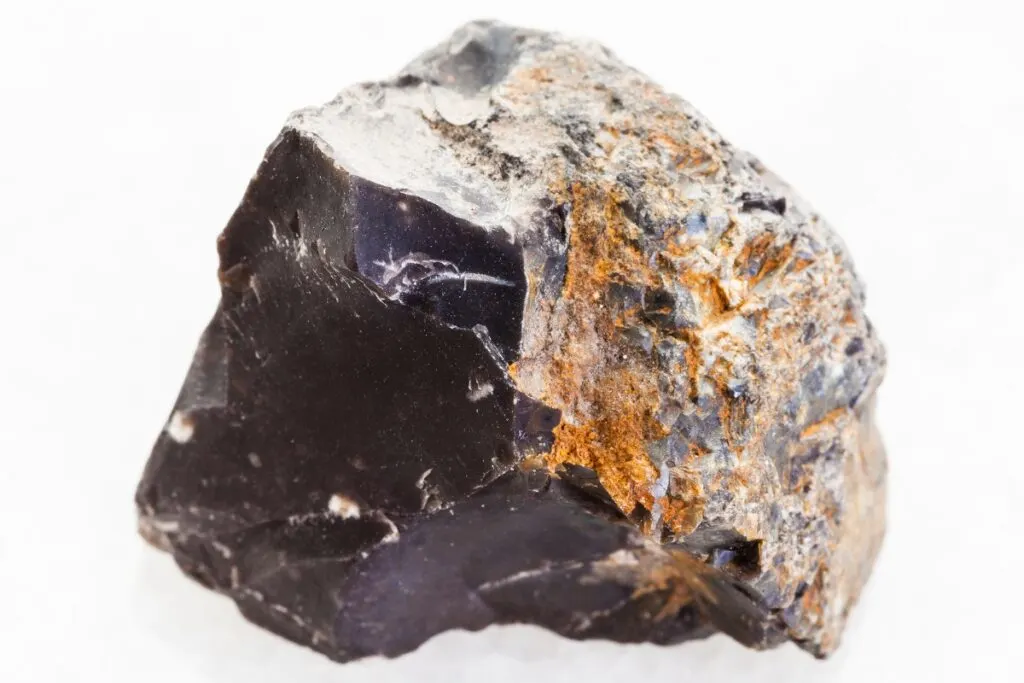
| Location | GPS Coordinates |
|---|---|
| Flint Ridge | 32.649205, -85.211693 |
| Etowah River | 34.191242, -84.954335 |
| Chattahoochee River | 32.372520, -84.973926 |
| Withlacoochee River | 30.845363, -83.343383 |
| Flint River | 33.552822, -84.383329 |
| Savannah | 32.071704, -81.078573 |
Although there are a couple of different types of chert in Georgia, the most common one is flint. High-quality flint that’s grey or black in color exists in Northern Georgia, and it’s a popular choice for rockhounds who craft arrowheads, ax heads, and other sharp tools.
Since the 1800s, Georgia residents have mined flint from Flint Ridge because of its excellent quality, and even though Flint Ridge is the most popular place to go, there are a few other sites around the state that are worth searching.
Another type of Georgia chert that deserves a mention is Coastal Plains Chert, which is known for its butterscotch color. This type of chert is often found near the Flint River, so if you are a fan of the famous butterscotch chert, then that’s the place to go.
As mentioned, the first place most rockhounds visit for flint in Georgia is Flint Ridge, but the Etowah River and the Chattahoochee River are also great providers of flint and other types of chert, including Coastal Plains Chert.
Slate
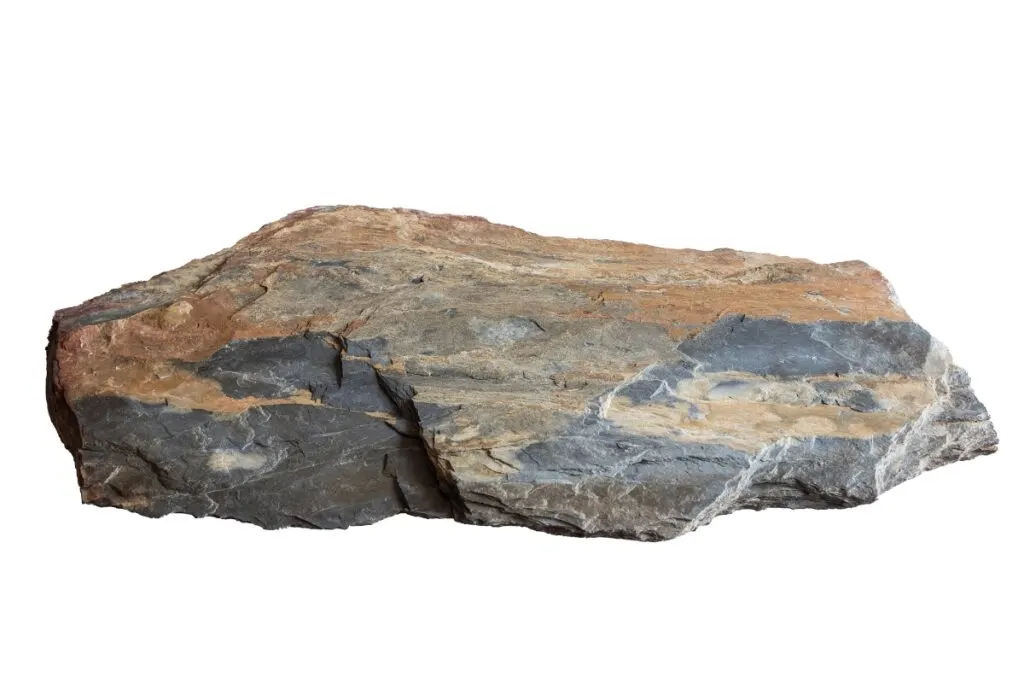
| Location | GPS Coordinates |
|---|---|
| Rockmart | 34.005664, -85.051882 |
| Cartersville | 34.153894, -84.795242 |
| Gadsden County | 34.000512, -85.999534 |
| Madison County | 33.598954, -83.480787 |
| Savannah River | 32.192772, -81.157323 |
| Chatham County | 32.179886, -81.165111 |
Surprisingly, slate is almost as famous as marble in Georgia, especially Rockmart slate. Rockmart slate has been used for landscaping and building all around the world, and it forms in folds near Rockmart, Georgia.
Currently, there’s only one active slate quarry in Georgia, and they have been mining Rockmart slate since the 1850s.
As you would expect, you can find Rockmart slate in Rockmart, Georgia, but there are other places to find slate in this state, including Cartersville and Gadsden County.
TIP: You can cut rocks with wet tile saws or lapidary saws fitted with diamond blades. Check out the best saws for cutting rocks in the article below:
What Is The Best Saw For Cutting Rocks? Try These 3 Saws
What Minerals Are Found in Georgia
After rockhounding in Georgia, you are sure to return with handfuls of shiny minerals, such as:
Staurolite
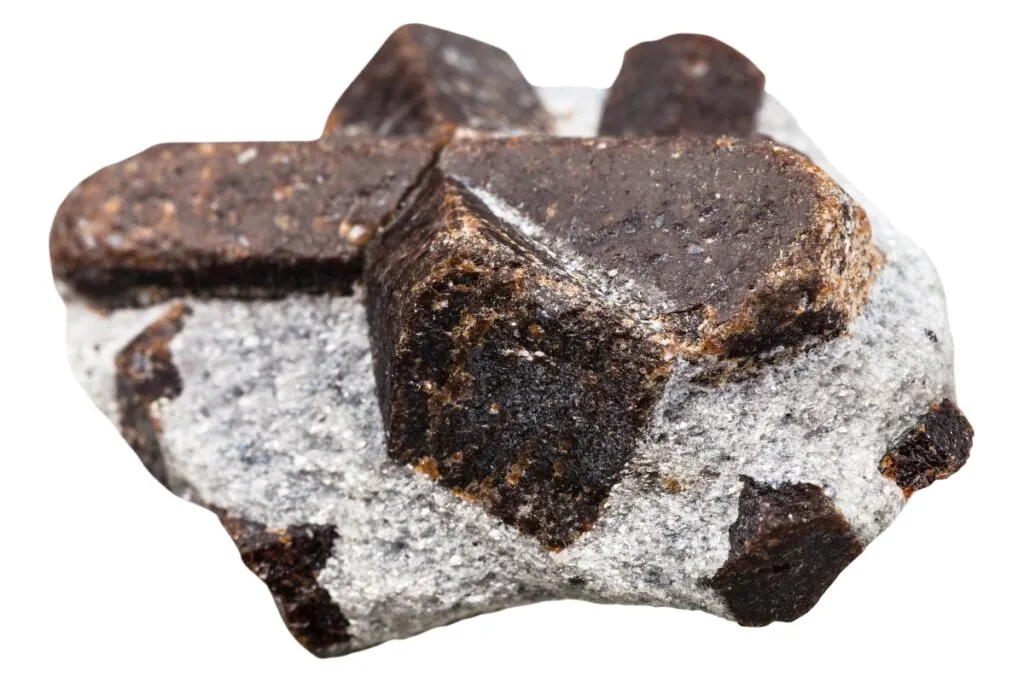
| Location | GPS Coordinates |
|---|---|
| Sharp Mountain | 34.437524, -84.501531 |
| Gilmer County | 34.639616, -84.525553 |
| Turkey Hill | 34.489679, -83.987890 |
| Bluff Creek | 34.347222, -84.455111 |
| Fannin County | 34.875471, -84.285000 |
| Cherokee County | 34.242834, -84.450873 |
| Windy Ridge | 34.925944, -84.289667 |
In 1976, staurolite was nominated as the state mineral of Georgia, so it makes sense that it’s one of the most common minerals found in the state.
Known for its unique cross-like shape, staurolite is usually embedded in the sedimentary rocks of Georgia, and it can be difficult to remove without damaging its shape.
One aspect of Georgia’s staurolite that makes it special is that the shape of staurolite in this state can form an “X” or a “T” shape instead of the usual cross.
Luckily, finding staurolite in Georgia is easy if you know where to look, and some of the top locations include Sharp Mountain, Turkey Hill, and Windy Ridge.
Quartz
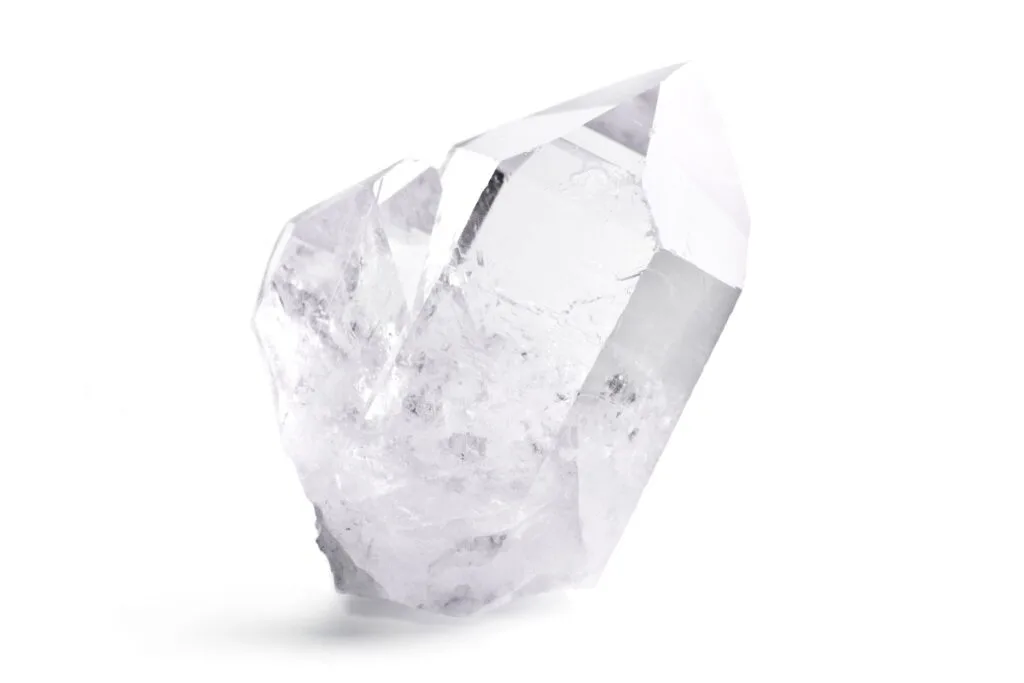
| Location | GPS Coordinates |
|---|---|
| Monroe | 33.822826, -83.719696 |
| Graves Mountain | 33.741122, -82.524426 |
| Hogg Mine | 32.938321, -85.019487 |
| Coldwater Creek | 34.178224, -82.732998 |
| Lake Sinclair | 33.178432, -83.248914 |
| Hurricane Creek | 34.515820, -84.070134 |
Who doesn’t love to add another shiny piece of quartz to their collection? Some common types of quartz that occur in Georgia are clear crystal, amethyst, and rutile. If you are on the hunt for these types of crystals, look no further than Georgia, a state that nominated quartz as its state gem.
If you want to find clear quartz crystals, Monroe is your best bet. However, for amethyst and rutile, Graves Mountain should be your go-to location.
TIP: There are numerous fake quartz crystals you can come across in the market, even if quartz is the most widespread mineral. Find out more in the article below:
Real vs. Fake Quartz: Focus on These 12 Key Differences
Garnet
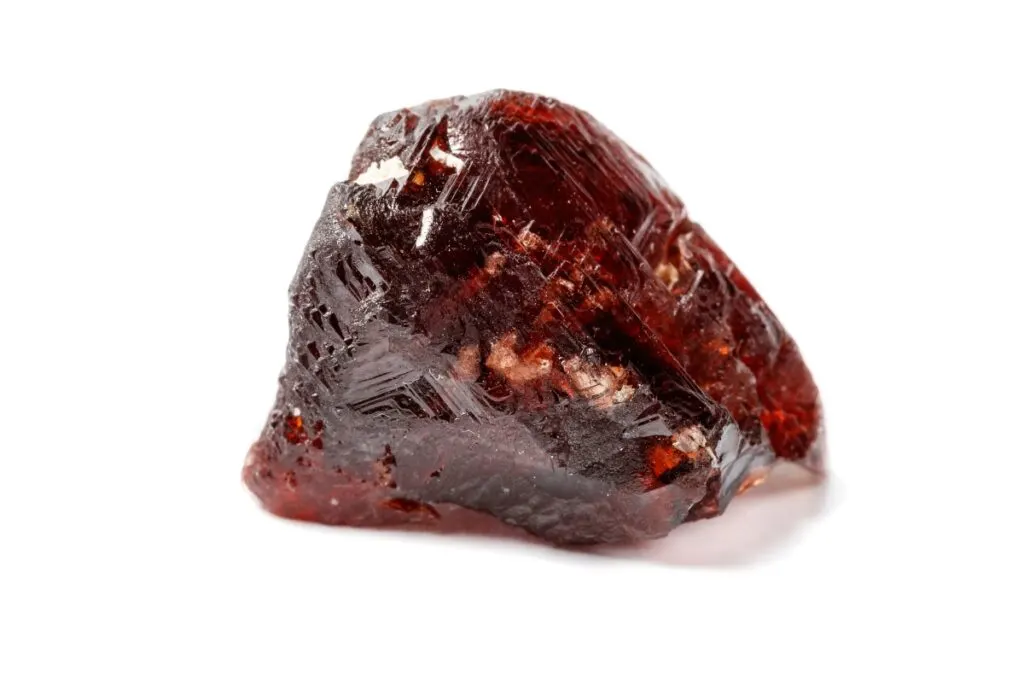
| Location | GPS Coordinates |
|---|---|
| Hogg Mine | 32.938321, -85.019487 |
| Fayetteville | 33.448228, -84.511079 |
| Garnet Hill | 33.883411, -84.798070 |
| Chatuge Lake | 34.973656, -83.815066 |
| Turkey Hill | 34.489679, -83.987890 |
| Alec Mountain | 34.668828, -83.596340 |
| Cherokee County | 34.242834, -84.450873 |
In the Peach State, there are two types of garnets that are popular among rockhounds. The first is the famous almandine garnet, which is prized for its deep red color. The second is the pyrope garnet, which is a brighter shade of red than the almandine garnet.
Garnets can come in all shapes and sizes; an impressive 5-pound garnet was found near Fayetteville in Georgia, but this garnet was an exception. Usually, the stones will be much smaller in size, and many of them are gem quality.
Hogg Mine, Garnet Hill, and Turkey Hill are some great rockhounding sites if you want to add quality garnets to your collection.
Tourmaline
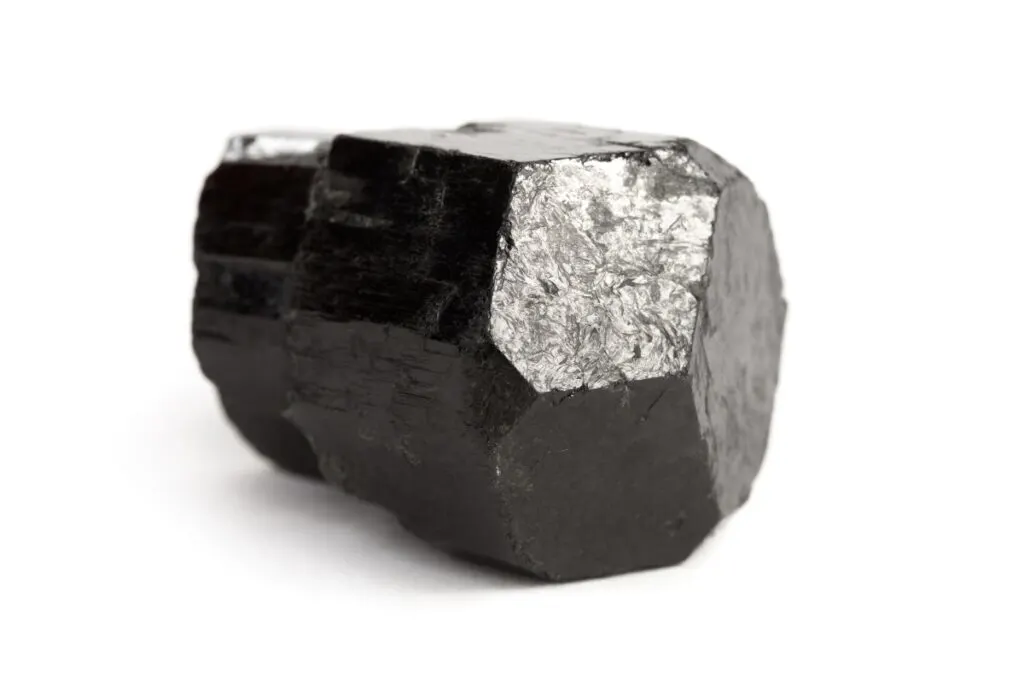
| Location | GPS Coordinates |
|---|---|
| Hogg Mine | 32.938321, -85.019487 |
| Walton County | 33.779254, -83.688459 |
| Centerville | 32.638525, -83.695903 |
| Lamar County | 33.075108, -84.137687 |
| Turkey Hill | 34.489679, -83.987890 |
| Spalding County | 33.280232, -84.313127 |
While there is plenty of tourmaline in Georgia, it is rare to find gem-grade pieces. The majority of tourmaline in this state is black schorl, and even though it’s an interesting mineral, it’s not on the same level as its gem-grade relatives.
Nonetheless, this doesn’t mean it’s impossible to find gem-grade tourmalines in this state, such as green and blue tourmalines, but they are only located in specific areas.
Hogg Mine and Turkey Hill are excellent sources of tourmaline, and you can also check the areas in Walton County, Lamar County, and Spalding County for this colorful mineral.
TIP: There is a good chance that you have collected a specimen with radioactivity while out rockhounding without even knowing it. Check out the common radioactive rocks in the article below:
What are Radioactive Minerals? 6 Common Radioactive Rocks
Gold
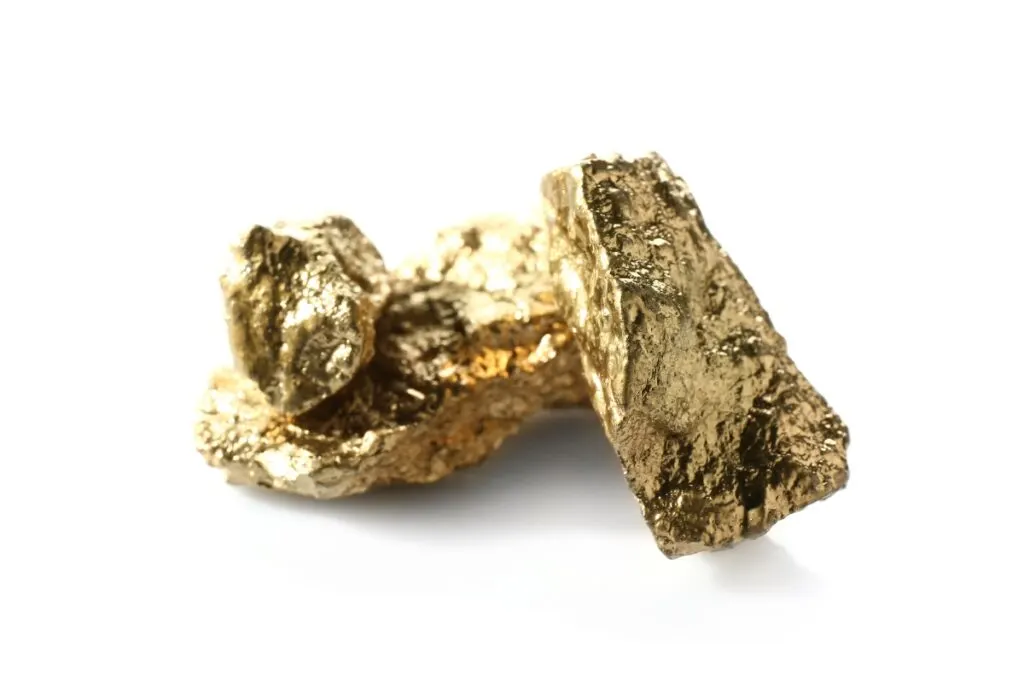
| Location | GPS Coordinates |
|---|---|
| Etowah River | 34.191242, -84.954335 |
| Chattahoochee River | 32.372520, -84.973926 |
| Dahlonega (creeks and washes) | 34.519047, -83.989771 |
| Little River | 34.109067, -84.415300 |
| Cleveland (creeks and washes) | 34.586680, -83.757818 |
| Chestatee River | 34.497754, -83.983450 |
| Little Tallapoosa River | 33.726454, -84.985305 |
It’s every rockhound’s dream to find a gold nugget, and in Georgia, you can make that dream a reality.
Gold flakes and nuggets are abundant in the streams and rivers of Georgia, and fortunately, there are no special permits, fees, or permissions necessary to pan in this state (unless you are on privately owned land).
In the Peach State, gold is regularly retrieved from the Etowah River, Chattahoochee River, Little River, and the Little Tallapoosa River.
TIP: If you want to know more about gold prospecting in Georgia, check out the complete guide in the article below:
Gold Prospecting in Georgia: 7 Best Locations & Laws
Calcite
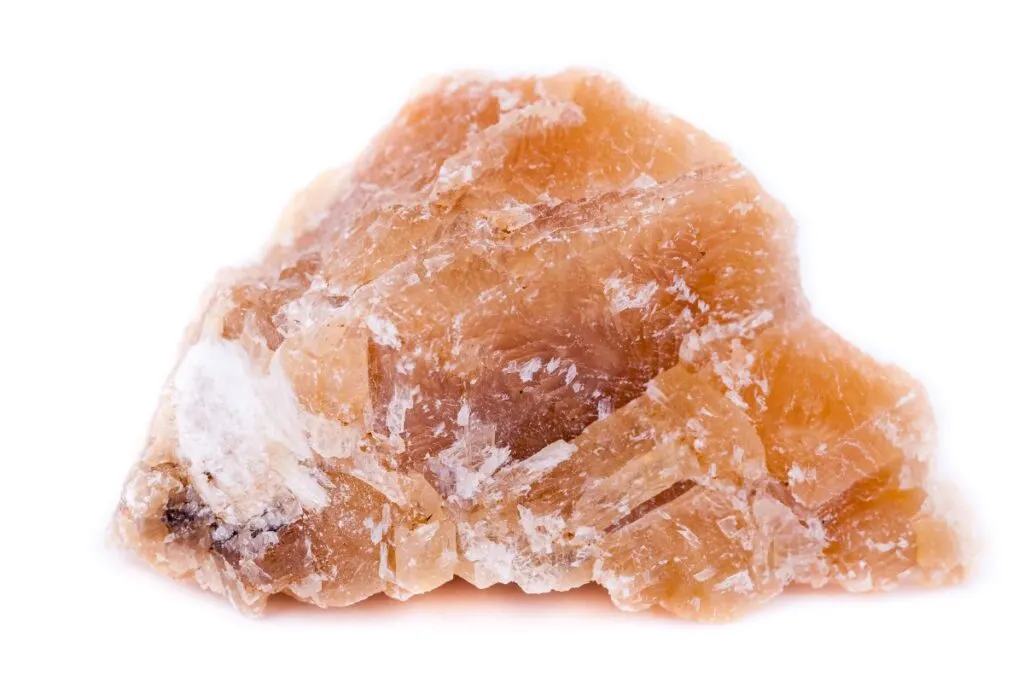
| Location | GPS Coordinates |
|---|---|
| Graysville | 34.976252, -85.141212 |
| Lithonia | 33.713094, -84.103154 |
| Pickens County | 34.423995, -84.355369 |
| Black Marble Quarry | 34.506777, -84.723763 |
| Ledbetter Quarry | 34.290887, -85.205609 |
| Gordon County | 34.501127, -84.848180 |
Where there is marble in Georgia, calcite is usually somewhere nearby. Calcite specimens from this state are typically clear or white in color, but some pieces have hints of other colors, such as pink.
If you are searching for industrial calcite, it exists all over the state, but if you are on the hunt for collection-grade calcite, you will need to look in specific counties and locations, which are mentioned below.
For collection-grade calcite, visit Graysville, Lithonia, and Pickens County. You can also check out the surrounding areas near marble quarries, such as Black Marble Quarry and Ledbetter Quarry.
TIP: Calcite comes in various crystal habits and colors, resulting in a wide range of varieties with different values. Find out more about the value of calcite in the article below:
Calcite Value: Main Factors & Prices for Different Units
Aquamarine
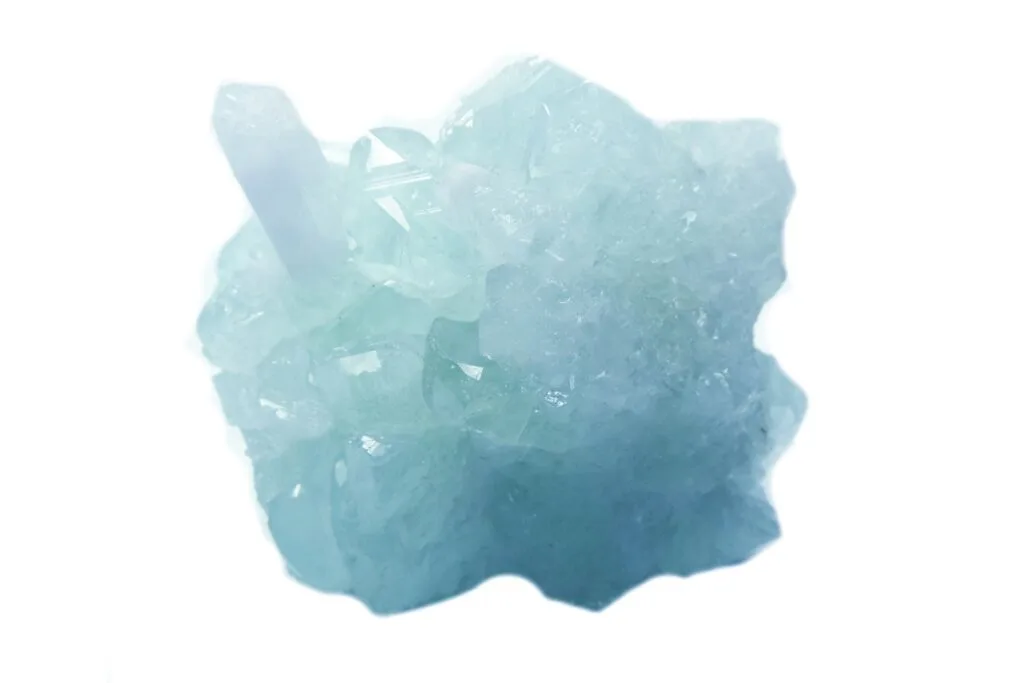
| Location | GPS Coordinates |
|---|---|
| Graves Mountain | 33.741122, -82.524426 |
| Hogg Mine | 32.938321, -85.019487 |
| Banks County | 34.316722, -83.531831 |
| LaGrange | 33.007584, -85.068535 |
| Pickens County | 34.423995, -84.355369 |
| Broad River | 34.029211, -82.947105 |
| White County | 34.619396, -83.776765 |
Georgia aquamarine comes in all shades of blue, and sometimes it appears almost clear. The most common color for Georgia aquamarines is the popular light blue, and it’s found all over the state.
Fortunately, most of the aquamarines found in Georgia are gem-grade and can be used for jewelry and collections.
Graves Mountain and Hogg Mine are two of the best rockhounding locations for aquamarine, but people also visit Banks County, Pickens County, and White County for this colorful mineral.
BTW: Do you want to know more about rock and mineral identification? The books listed below are the best ones you can find on the internet (Amazon links):
- Smithsonian Handbooks: Rocks & Minerals
- Gemstone & Crystal Properties (Quick Study Home)
- Ultimate Explorer Field Guide: Rocks and Minerals (National Geographic Kids)
FAQ About Common Rocks & Minerals in Georgia
With gold, diamonds, sapphires, serpentine, and more, Georgia has almost everything a rockhound could want, as you’ll discover in these FAQs.
What Rare Rocks Can You Find in Georgia
In the Peach State, some rare rocks you can find include agate, jasper, serpentine, oolite, and tektite. Interestingly, tektite is not native to this earth, and it forms from meteorites.
When meteorites fall from the sky and crash into land, the resulting heat and pressure create a type of glassy rock that resembles obsidian.
A specific type of tektite called a Georgiaite, is one of the rarest tektite glasses found on earth, and it exists right here in Georgia. While the most common color for a Georgiaite is black, it can display green or brown colors.
Fortunately, agate, jasper, and serpentine are found all over the state, but if you want to collect tektites, it’s best to search near the Coastal Plain area since that’s where the majority of specimens are found.
What Rare Minerals Can You Find in Georgia
Any rockhound who enjoys collecting rare minerals and precious gems will be happy to know that Georgia is full of them, and some of the most popular ones include ruby, sapphire, gold, emerald, garnet, moonstone, topaz, peridot, aquamarine, and tourmaline.
These gemstones might not be as common as the rocks and minerals listed above, but you can increase your odds of finding them by visiting areas that are known for their gem production, such as Hogg Mine, Turkey Hill, and Graves Mountain.
What is the Most Famous Rock or Mineral Found in Georgia
Staurolite, also known as “fairy crosses,” “fairy stones,” or “baptismal stones,” is the most famous mineral found in Georgia.
Due to its unique cross shape, staurolite has always been a popular mineral among collectors, but Georgia staurolites are especially rare because they can take on original shapes. Occasionally, rockhounds will find Georgia staurolite with a “T” or “X” shape instead of the usual cross.
To find staurolite in the Peach State, look near Sharp Mountain, Cherokee County, and Windy Ridge. Take a look at the section on staurolite listed above for more locations and their coordinates.
BTW: If you are looking for the best UV light for rockhounding, find out my picks below (Amazon links):
- BEST OPTION: Convoy 8+ 365nm UV LED Flashlight with Patented Glass Filter
- BUDGET OPTION: Karrong Rechargeable 1200 Lumen 395nm UV Flashlight
- OPTION FOR INDOOR USAGE: Prime Upgraded Big Chip 396nm UV
Conclusion
When you visit Georgia, you’ll be able to bring home much more than just peaches, peanuts, and pecan pie.
Rare rocks and minerals abound in this southern state, so you are sure to have a fun and successful rockhounding journey. Tektite, aquamarine, staurolite, marble, gold, tourmaline, and more await you in Georgia, so don’t hesitate to plan a rockhounding trip to the Peach State!
TIP: Georgia is an excellent state to rockhound since America’s major gold rush. Check out the complete guide on the best rockhounding spots in Georgia in the article below:
Best Rockhounding Sites in Georgia & What You Can Find
